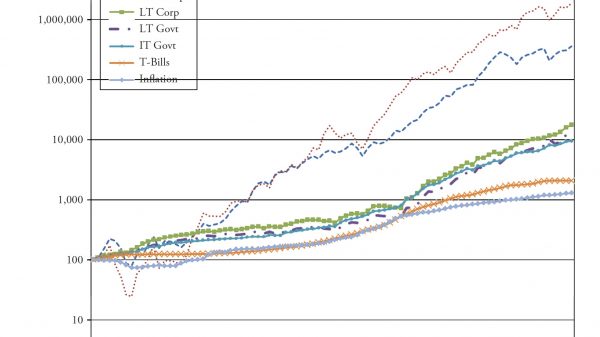Romina Boccia
The Congressional Budget Office’s (CBO) recently released budget projections cast a harsh light on the precarious financial future of the US. Politically entrenched old�​age benefit programs, primarily Medicare and Social Security, are the key drivers of exploding federal debt. If Congress fails to act, seniors will face a 21 percent cut to their Social Security benefits in 2033 and an 11 percent cut to Medicare Part A benefits in 2036.
While these potential cuts underscore the need for legislative action, Medicare and Social Security are already contributing significantly to US deficits and debt. See the updated fact sheet at the link or at the end of this piece to better understand Medicare’s and Social Security’s finances.
The new CBO numbers are stark. According to the nonpartisan agency: “rising spending for Social Security and Medicare boosts mandatory outlays, discretionary spending as a share of GDP falls to historic lows, and higher interest rates and mounting debt cause net outlays for interest to increase.� In sum: major entitlements are driving the US deeper into debt and exploding interest costs in the process.
As CBO explains, “Beginning in 2025, interest costs are greater in relation to GDP than at any point since at least 1940 (the first year for which the Office of Management and Budget reports such data) and exceed outlays for defense and outlays for nondefense programs and activities.� In short, CBO has never seen interest costs of this magnitude in US history. Further reform delays will hurt Americans’ economic prospects, undermining growth and risking an eventual fiscal crisis that could unleash out�​of�​control inflation.
A Bipartisan Effort to Stabilize US Debt
There is, however, a glimmer of hope. The House Budget Committee recently passed a bill that proposes the creation of a bipartisan fiscal commission. This commission, comprising lawmakers from both parties, would be tasked with developing solutions to stabilize the US debt and address the unfunded obligations of Social Security and Medicare. While the Fiscal Commission Act of 2024 has yet to be considered by the full House of Representatives, its passage in committee is a positive step.
At a recent House Budget Committee hearing on Medicare and Social Security, Stephen Goss, the Social Security Administration’s chief actuary, expressed optimism about the potential of such a commission: “We have a large list of provisions and proposals up on our website to sort of look at and choose from. A commission that would look through all of those possibilities and come to a consensus would be a really good thing.�
Indeed, the establishment of a bipartisan commission could pave the way for the comprehensive reforms needed to ensure the longevity not only of these programs but of the engine that fuels the US economy.
Fast Facts about Medicare and Social Security
Medicare and Social Security, the two largest and fastest�​growing government programs, are unsustainable as currently structured. Medicare consists of four parts which provide inpatient care (Part A), outpatient care (Part B), prescription drug coverage (Part D), and subsidies for seniors to choose alternative health insurance providers through Medicare Advantage (Part C). Social Security consists of Old Age and Survivors Insurance (OASI) and Disability Insurance (DI). For the purposes of this fact sheet, Social Security will refer to OASI. Here are key fiscal details legislators and the public should know about Medicare and Social Security to examine their finances.
Medicare
Medicare is the second largest federal government program, spending $1 trillion in 2023, or an amount equal to 3.8 percent of gross domestic product (GDP).
Medicare spending will double to $2 trillion or 5.1 percent of GDP by 2033.
That’s twice what the US government is estimated to spend on defense that year.
67 million Americans receive Medicare at an average cost of $16,698 per beneficiary, with taxpayers covering $13,150 on average. By 2033, Medicare will spend an average of $27,890 per beneficiary.
One�third of Medicare spending provides no value for patients: it makes them no healthier or happier.
Medicare increased total hospital spending by 37 percent over five years.
Medicare adds significantly to federal deficits and faces increasing budget shortfalls.
Medicare was responsible for $449 billion in deficits (including associated interest costs), or 27 percent of the entire 2023 federal budget deficit.
Medicare’s trust fund holds no real assets, and only Medicare Part A is funded by payroll taxes. The majority (65 percent) of Medicare spending is financed by other taxes and borrowing.
When the Medicare Hospital Insurance (Part A) trust fund ledger goes to 0 by 2036, inpatient providers will face a reimbursement cut of 11 percent.
$48.5 trillion or 62 percent of the $78.4 trillion in 75�​year unfunded obligations for Medicare and Social Security is due to spending on Medicare Parts B and D, with taxpayers on the hook for the difference between what beneficiaries pay in premiums and the benefits they receive. For context, Medicare Part A accounts for $4.6 trillion in 75�​year unfunded obligations.
If Congress raised payroll taxes just to cover Medicare Part A’s 75�​year unfunded obligations, a median wage earner ($48,000/year) would face an additional $168 in payroll taxes, annually.
Social Security
Social Security is the single largest federal government program, spending $1.2 trillion in 2023 or 4.4 percent of GDP.
Social Security spending will double to $2.1 trillion or 5.1 percent of GDP by 2033. By then, the government is estimated to spend more on Social Security annually than on the entire defense and nondefense discretionary budget.
By 2025, the number of beneficiaries will exceed a record 60 million.
The average monthly benefit for an individual was $1,760 in 2023.
The maximum monthly benefit for an individual is $4,873.
Because initial benefit levels are indexed to wage growth, Social Security benefits are growing much faster than inflation. A maximum�​benefit�​eligible beneficiary, retiring in 2045, would receive over $23,000 more in annual benefits that year, after adjusting for inflation, than a comparable worker who retired in 2020.
Since the program’s inception, life expectancy at birth has increased by nearly 16 years. Yet, Social Security’s eligibility age has only increased by 2 years.
Social Security is already contributing to federal deficits with rising cash�​flow shortfalls.
Social Security was responsible for $106 billion in deficits (including associated interest costs), or 6 percent of the entire 2023 federal budget deficit.
Social Security’s trust fund is a liability, not an asset. Social Security holds no real assets beyond IOUs against future US taxpayers. Those IOUs, which amount to $2.6 trillion as of 2024, are part of the $34.7 trillion gross national debt.
When the Social Security trust fund ledger depletes by 2033, all beneficiaries, regardless of age, income, or need, will face a 21 percent benefit cut.
Social Security’s 75�​year unfunded obligation (combined OASI and DI)—the difference between the present value of tax revenues and spending—is $25.2 trillion, comparable in size to nearly the entire publicly held debt of $27.6 trillion in 2024.
If Congress raised the payroll tax to cover 75 years of Social Security’s unfunded obligations, median wage earners ($48,000/year) would have to pay an additional $1,598 in payroll taxes, annually.
Further reading:
Cato Handbook for Policymakers: Medicare “In dollar terms, Medicare is the largest purchaser of medical care goods and services in the world—in part because it pays excessive prices to health care providers and wastes hundreds of billions of dollars on medical care that provides no value to enrollees.�
Social Security Pays Excessive Benefits to the Highest�Income Earners: A UK Comparison “Reducing benefits for higher�​income earners to keep program costs in check, and especially as part of a more fundamental rethinking of the proper purpose of an old�​age�​income support program, is a better alternative than raising taxes on current workers.�
Medicare and Social Security Are Responsible for 100 Percent of US Unfunded Obligations “[L]egislators will make little progress on averting a fiscal crisis until they grapple with excess spending growth in old�​age benefit programs.�











